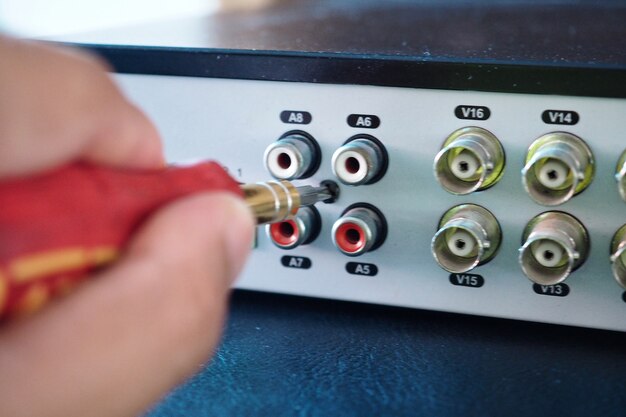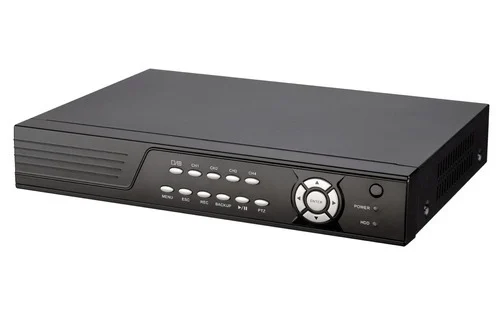
DVR: The Ultimate Guide
DVR stands for “digital video recorder” and is a device that can record and save

DVR stands for “digital video recorder” and is a device that can record and save digital video. Its primary usage is in the surveillance camera monitoring and recording process. DVRs have proven to be an invaluable tool for keeping a check on property and assets, both commercial and residential.
History of DVR
TiVo, a business that specialises in digital video recording technology, released the first DVR in 1999. The gadget was created so that viewers may record their favourite programmes and watch them later on their own time. DVRs were popular, and competitors soon started making their own versions of the device.
Digital video recorders (DVRs) replaced analogue tape-based recording systems in the security business in the early 2000s. Their user-friendliness, dependability, and low price led to rapid adoption. Digital video recorders (DVRs) are now used in both professional and private contexts.
How DVR Works

DVRs record video from security cameras and save it to a hard disc for later viewing. Coaxial cables or IP cameras may be used to link the cameras to the DVR remotely. The DVR converts the analogue video into a digital version and saves it on the hard disc.
The DVR will start replacing older recordings with fresh ones whenever the storage space on the hard disc is exhausted. Most digital video recorders also have motion detection, which triggers recording whenever the camera detects movement.
Types of DVR
There are a few different varieties of digital video recorders (DVRs) on the market today.
- Standalone DVR: The term “standalone DVR” refers to a digital video recorder that is both complete and self-contained. It’s perfect for homes and small companies that just require the most basic monitoring features because of how simple it is to set up and operate.
- PC-based DVR: Digital video recorder (DVR) software for personal computers. Connecting to security cameras calls for supplementary gear like capture cards or USB video capture devices. PC-based DVRs include additional functions, including remote access and real-time monitoring, and are more versatile than standalone systems.
- Hybrid DVR: A hybrid digital video recorder (DVR) combines the best of both traditional DVRs and PC-based systems. It consists of a standalone video recording and storage device, as well as computer-based monitoring and access software.
Features of DVR
Digital video recorders (DVRs) provide a number of useful functions that make them excellent surveillance tools. Features such as these include:
- Motion detection: Most DVRs offer motion detection capabilities that trigger recording only when the camera detects movement. This reduces the amount of data that must be stored and makes it simpler to locate certain videos.
- Remote access: Many contemporary DVRs provide remote access features that make it possible to watch live and recorded content from any location through a computer or mobile device.
- Real-time monitoring: Some high-end DVRs include a feature called “real-time monitoring” that lets users see live video from many cameras all at once.
Choosing the Right DVR
Storage space, channels, and picture quality are all important considerations when shopping for a digital video recorder. To aid you in making the correct selection, consider the following:
- Storage capacity: Select a DVR with a storage capacity that will accommodate your demands. The standard for new devices is now 1TB of storage capacity.
- Number of channels: How many cameras you want to attach to the system will determine how many channels you require. Pick a system that has enough channels for your requirements.
- Resolution: Selecting a device with a high resolution will guarantee crisp, detailed recordings.
Installation and Setup
If you’re not tech-savvy, installing and configuring a DVR system might be difficult. To get you started, here are a few pointers:
- Wiring: Before beginning installation, double-check that you have all the required cables and connections for the wiring. Be sure to wire your system according to the manufacturer’s specifications.
- Camera placement: To get the best possible coverage of your property or assets, think carefully about where you put the cameras.
- Software configuration: To get the most out of your programme, you need to properly configure its settings.
Maintenance and Troubleshooting
To get the most out of your DVR, regular maintenance is a must. Some preventative measures for your system are as follows:
- Regular backups: Back up your data on a regular basis to prevent losing any priceless video.
- Cleaning: Regular cleaning of your cameras is essential if you want crisp, clear footage.
If you’re having difficulties with your system, you should check for and attempt to fix obvious issues like connection or power supply failure before getting in touch with an expert.
Conclusion
Digital video recorders (DVRs) have quickly evolved into a standard monitoring tool for both commercial and residential properties. In this piece, we looked back at the development of digital video recorders (DVRs) and how they’ve changed the security sector. We also covered the inner workings of DVRs, the many kinds of DVRs, and their most notable characteristics. We shared advice on how to go about locating the best DVR for your requirements, setting up your system, and keeping it running well.
Hopefully, you’ve learned something new about DVR technology from this post. Feel free to ask questions or make observations in the space provided.
You Can Also Read Here What to Do If Your Vizio Remote Is Not Working: Tips and Tricks
